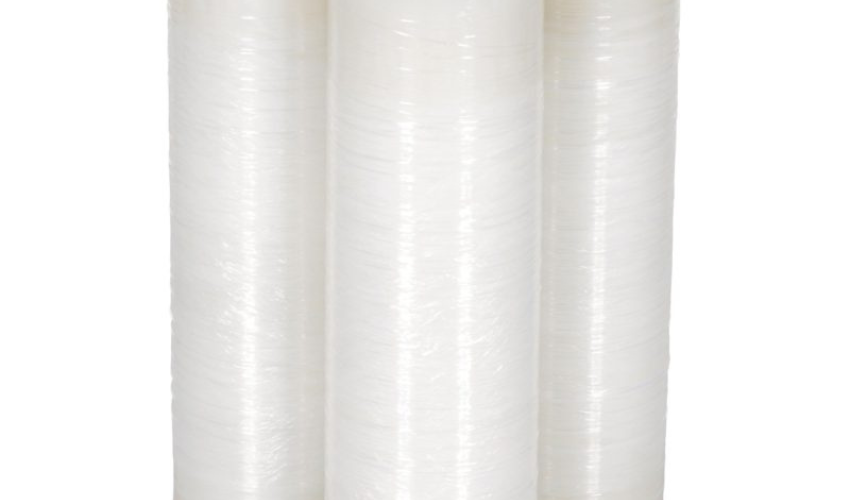
Stretch wrapping is a widely used packaging technique that secures products by tightly encasing them in elastic plastic film. This method plays a crucial role in protecting goods during storage and transportation, ensuring they remain intact and undamaged. Understanding the concept of a stretch wrapped load is essential for businesses looking to optimize their packaging processes. Key factors such as stretch wrapped load sizes, costs, and the machinery involved can significantly impact efficiency and overall logistics. By exploring these aspects, companies can make informed decisions that enhance product stability, reduce shipping expenses, and improve operational workflows, ultimately leading to better outcomes in the supply chain.
Understanding stretch wrapped load sizes is essential for effective packaging and logistics. The size and weight of the load directly influence the choice of wrapping technique, the type of stretch film used, and the machinery involved in the process. Stretch film uses vary based on the load characteristics, and selecting the right film ensures that the load is secured tightly, preventing movement and reducing the likelihood of damage. A properly sized stretch wrapped load not only ensures the stability of the products during transport but also minimizes the risk of damage.
A stretch wrapped load refers to a collection of items securely bundled together with stretch film. The dimensions of this load can vary widely based on the types of products being wrapped, their configurations, and the packaging requirements. Different load sizes necessitate different wrapping methods; for instance, larger loads may require more layers of film for added security, while smaller loads may need less material and can be wrapped more quickly. Understanding these variations helps in optimizing the wrapping process and reducing costs.
Standard pallet sizes play a crucial role in determining stretch wrapped load sizes. The most common pallet dimensions include:
These standard sizes facilitate easy stacking and transportation in warehouses and shipping containers. When wrapping a standard stretch wrapped load, it’s essential to ensure that the film covers the entire perimeter of the pallet and that the load is stable. Adhering to pallet wrapping standards ensures the proper tension and overlap of the stretch film, helping secure the load effectively. Properly wrapped standard pallets help reduce shifting and potential damage during transit.
While standard sizes are widely used, many businesses deal with custom loads that do not fit conventional dimensions. In these cases, special considerations must be taken into account:
By carefully considering these factors, companies can effectively manage stretch wrapped load sizes, ensuring that all loads—standard or custom—are secured adequately for transport. This understanding not only contributes to the safety and integrity of products during shipping but also plays a significant role in reducing waste and costs associated with packaging materials. In summary, mastering the concept of stretch wrapped load sizes is crucial for achieving operational efficiency and safeguarding products throughout the supply chain.
Stretch wrap packaging is a widely adopted method for securing and protecting goods during storage and transit. This technique not only enhances the integrity of individual items but also ensures that stretch wrapped load sizes are optimally maintained. By utilizing stretch wrap, businesses can streamline their packaging processes while achieving significant cost savings and efficiency improvements.
Understanding the advantages of stretch wrap in unit load management is critical for any organization engaged in logistics and shipping. Here are seven key benefits:
Stretch wrap packaging is versatile and finds applications across various sectors:
In addition to the benefits mentioned, the advantages of stretch wrapping loads extend beyond just protection and stability. For example, it allows for better inventory management, as wrapped items can be stacked more efficiently and identified easily. Furthermore, stretch wrap reduces the need for additional packaging materials, streamlining the packaging process and reducing waste.
Despite the numerous benefits, there are also some disadvantages of stretch wrapping loads that should be considered:
By understanding both the benefits and disadvantages, businesses can make informed decisions about utilizing stretch wrap packaging for their products, ensuring that their stretch wrapped load is secure and effective for transport.
Understanding the stretch wrapped load cost is essential for businesses looking to optimize their packaging processes. The total expense associated with stretch wrapping can significantly influence the overall operational budget, making it crucial to analyze the various factors that contribute to these costs.
| Stretch Film Type | Cost per 1000 ft | Strength | Ideal Applications |
|---|---|---|---|
| Cast Stretch Film | $60 | Moderate | Food and beverage, retail |
| Blown Stretch Film | $70 | High | Industrial, heavy loads |
Investing in efficient stretch wrapping practices can lead to substantial long-term savings. Here are a few ways in which efficient stretch wrapping reduces overall shipping and handling costs:
Understanding the factors influencing the stretch wrapped load cost and recognizing the potential for long-term savings can empower businesses to make informed decisions. By selecting the appropriate materials and methods for wrapping, companies can enhance their packaging efficiency while keeping costs in check.
The choice of a stretch wrapping machine is crucial for achieving a secure and stable stretch wrapped load. Understanding the types of machines available and their benefits can help businesses optimize their packaging operations.
The selection of an appropriate stretch wrapping machine is vital for maintaining the integrity of a stretch wrapped load. By choosing the right type of machine and leveraging its advantages, businesses can improve their packaging efficiency, consistency, and overall cost-effectiveness.
Automatic pallet wrapping machines play a pivotal role in enhancing the efficiency of the packaging process, particularly for businesses that require consistent and rapid wrapping of products. These machines are designed to create a secure stretch wrapped load, minimizing the risk of damage during transportation and storage.
Automatic pallet wrapping machines provide numerous advantages that streamline the wrapping process, enhance efficiency, and reduce costs. By implementing these machines, businesses can achieve optimal packaging solutions that safeguard their products and improve operational performance.
Stretch wrap turntable machines are essential tools in the packaging industry, particularly for creating a secure stretch wrapped load. These machines provide an efficient and reliable method for wrapping pallets, ensuring that products are stable and well-protected during transportation.
Stretch wrap turntable machines offer a balance of efficiency, consistency, and space-saving design, making them a valuable asset for businesses looking to optimize their packaging processes. By ensuring a secure stretch wrapped load, these machines enhance product protection during storage and transportation, ultimately contributing to operational success.
A stretch wrap machine with a built-in scale represents an advanced solution for businesses looking to enhance their packaging efficiency. These machines not only wrap pallets securely but also provide precise weight measurements, making them invaluable in the logistics and shipping sectors.
Stretch wrap machines equipped with scales provide a dual benefit of ensuring a secure stretch wrapped load while also enhancing the accuracy of weight measurements. This integration supports logistics operations, leading to improved shipping processes and greater cost efficiency in the supply chain.
Stretch wrapping, also known as stretch film wrapping, is a packaging technique utilized to secure items on a pallet or as individual packages. This method involves using a thin, highly elastic plastic film made primarily of polyethylene to wrap around goods, ensuring that they remain tightly bound and protected during storage or transportation. The elasticity of the wrap keeps items tightly bound and resistant to dust, moisture, and other potential damages.
Stretch wrappers automate the process of wrapping pallets or goods with stretch film. They come in various types, including turntable, orbital, and robotic wrappers. A turntable stretch wrapper, for example, places the pallet on a rotating platform, while the film is delivered from a stationary mast. As the platform spins, the film wraps around the pallet in an upward and downward direction, efficiently securing the load. Orbital and robotic wrappers, on the other hand, might move the film around a stationary pallet or adapt flexibly to different package shapes and sizes, respectively. These machines typically stretch the film before applying it to ensure a tight and secure wrap.
The strength of stretch wrap is significant, designed to hold and secure loads of varying weights and sizes during transportation or storage. It is resistant to punctures and tears, thanks to its multi-layer structure. Manufacturers typically measure its strength in terms of stretch percentage, load holding capacity, and film memory. High-quality stretch wraps can stretch up to 300% of their original size, providing both flexibility and strength. This elasticity coupled with the film’s ability to conform to any shape ensures the stability of palletized goods under various conditions.
The process of stretch wrapping involves a sequence of stages aimed at securing a load: Preparation, where the load is placed onto the pallet and any necessary adjustments made to ensure stability; Stretch and Wrap, where the stretch film is applied over the load using either a manual dispenser or an automated wrapping machine, ensuring the film is stretched to maximize strength and efficiency; and finally, Cutting and Sealing, where the film is cut from its roll and the tail is secured to the load or itself to prevent unwrapping. During the wrapping process, the tension must be managed carefully to ensure the film is tight enough to hold the load but not so tight as to damage the product or the film itself.

My name is James Thompson, and I’m the editor of this website dedicated to Stretch Film, Pallet Wrap, and Stretch Wrap products.
My passion for packaging began when I noticed the challenges companies face in securing their products efficiently for transportation and storage. This inspired me to delve deep into the world of stretch films and pallet wraps, exploring the latest technologies and best practices.
I aim to provide valuable insights, practical tips, and up-to-date industry trends to assist you in making informed decisions. Whether you’re a small business owner or part of a large corporation, my goal is to support you in optimizing your operations and ensuring your products reach their destination safely.
Thank you for visiting, and I look forward to accompanying you on your journey toward better packaging solutions.
Comments are closed